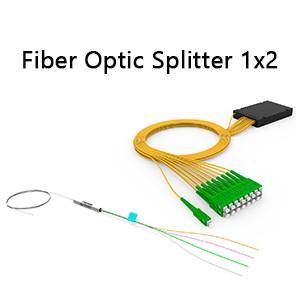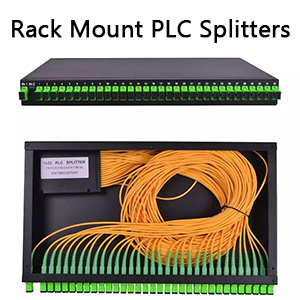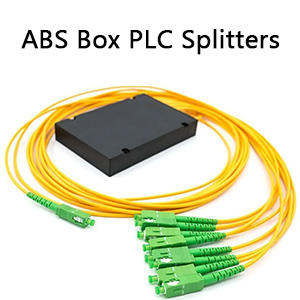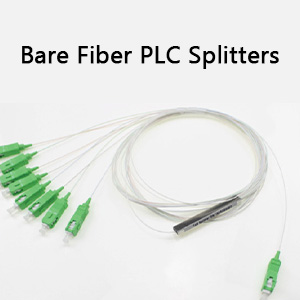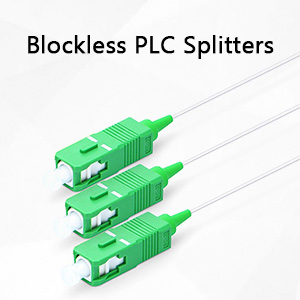In the field of fiber optic communications, coarse wavelength division multiplexing (CWDM) and dense wavelength division multiplexing (DWDM) technologies play a key role in maximizing fiber capacity and efficiency. Although the two technologies share the basic principle of wavelength division, there are differences in wavelength spacing, capacity, and application scenarios. This article explores the differences between 1×2 CWDM and 1×2 DWDM configurations to help you understand which technology is best for your network needs.

What are 1×2 CWDM and 1×2 DWDM modules?
A 1×2 CWDM or DWDM module is a fiber optic device that splits or combines signals based on specific wavelengths. In a 1×2 configuration, the module either transmits two signals over one fiber (multiplexing) or splits one fiber into two wavelengths (demultiplexing).
1×2 CWDM: Coarse wavelength division multiplexing modules typically use larger wavelength spacing, making them ideal for medium-distance applications.
1×2 DWDM: Dense wavelength division multiplexing modules have tighter wavelength spacing, allowing more channels to be packed into a single fiber for high-capacity, long-distance transmission.
These two types of modules offer unique advantages depending on the needs and intended use of the network.
Main Differences Between 1×2 CWDM and 1×2 DWDM
Wavelength Spacing and Capacity
The main difference between CWDM and DWDM is the spacing between wavelengths. CWDM modules have wider channel spacing, typically around 20nm, while DWDM modules have tighter spacing, typically around 0.8nm.
CWDM: Due to fewer channels, CWDM is typically limited to about 16 channels per fiber. This setup is suitable for medium-distance applications that do not require extreme density.
DWDM: DWDM can support 80 or more channels per fiber, making it suitable for high-capacity applications that require tight signals.
Transmission Range and Power Requirements
Another key difference is transmission range. DWDM, with its tight channel arrangement, allows signals to travel greater distances without degradation, but generally requires higher power levels.
CWDM: Suitable for distances up to 80km, CWDM systems are often used in metropolitan area networks (MANs), where shorter distances are common.
DWDM: Ideal for long-haul applications, DWDM is able to transmit data across hundreds of kilometers, making it suitable for intercity or international fiber networks.
Cost-effectiveness
Due to differences in the equipment and design required, the cost of implementing each technology varies.
CWDM: Generally more affordable because it does not require as much cooling or precise wavelength control. This makes it popular in scenarios with lower channel counts and shorter distances.
DWDM: Costs are higher due to the need for precise wavelength control and cooling. However, in larger networks that require higher capacity, this investment is often justified.
Scalability
When planning a fiber infrastructure, the scalability of the network is an important factor. DWDM is easier to scale due to its high channel count.
CWDM: While suitable for modest growth, CWDM’s lower channel capacity may limit scalability in networks where high traffic volumes are expected.
DWDM: Its high channel capacity makes DWDM ideal for networks that require a lot of future growth potential.
Real-World Applications of 1×2 CWDM and 1×2 DWDM Modules
Both CWDM and DWDM have their unique advantages, depending on the environment and application. Here are the advantages of each technology in typical scenarios.
Metropolitan Area Networks (MANs)
In metropolitan networks, data needs to traverse the city, connecting various institutions, data centers, and service providers. CWDM modules are often used in these settings because of their medium-distance capabilities and cost-effectiveness.
Why CWDM? CWDM’s low cost and medium-distance efficiency make it a popular choice for MANs, where bandwidth needs are moderate and transmission distances are manageable.
Long-distance Transmission in Telecommunications Networks
Telecommunications companies rely heavily on long-distance fiber connections to transmit data between cities, countries, and even continents. DWDM’s ability to maintain signal integrity over vast distances makes it a suitable choice for these extensive networks.
Why DWDM?
DWDM supports long-distance, high-capacity transmission, making it ideal for large networks spanning hundreds or thousands of kilometers.
Data Centers and High-Performance Computing Networks
Modern data centers have huge bandwidth needs because they manage data between multiple servers and storage units. DWDM is often the preferred solution in these environments because of its ability to handle high capacity loads and minimize signal degradation.
Why DWDM? DWDM provides the density and capacity needed to meet the high demands of data centers, allowing large amounts of data to be efficiently managed across multiple locations.
Campus Networks and Local Area Networks (LANs)
A university campus or corporate building can benefit from CWDM modules, especially when connecting multiple buildings or floors and bandwidth needs are modest.
Why CWDM? CWDM provides enough capacity to connect multiple locations in a campus environment without the higher costs associated with DWDM.
How to Choose Between 1×2 CWDM and 1×2 DWDM in Your Network
When choosing between CWDM and DWDM, it is important to consider your network’s unique requirements and growth potential.
Evaluate Your Distance Needs
Determine how far data needs to travel in your network. If your network primarily operates within a city or campus, CWDM may be a more appropriate choice.
- CWDM is for short to medium distances: suitable for distances up to 80km.
- DWDM is for long distances: supports transmission over longer distances with higher power and stability.
Consider Future Growth and Scalability
If you anticipate significant growth in data traffic, DWDM’s higher channel capacity makes it a more scalable option.
CWDM for Moderate Growth: Suitable for environments where expected growth is modest.
DWDM for Massive Growth: Suitable for high-growth networks that may need to increase capacity significantly over time.
Evaluate Your Budget Constraints
CWDM is generally more cost-effective, and the higher initial investment of DWDM can pay off in high-demand networks.
CWDM for Budget-Constrained Applications: Lower implementation costs make CWDM an attractive option for cost-sensitive projects.
DWDM for High-Performance Needs: Despite the higher cost, the benefits of DWDM are invaluable in large-scale, high-performance networks.
Check Compatibility with Existing Infrastructure
Make sure the WDM technology you choose is compatible with your existing fiber infrastructure and equipment.
- CWDM for Flexibility: CWDM systems may offer more compatibility with standard optical equipment.
- DWDM for Precision Needs: DWDM generally requires more specialized, precision equipment and is suitable for advanced infrastructure.
Final Thoughts: Optimize Your Network with the Right WDM Solution
Whether you choose 1×2 CWDM or 1×2 DWDM, understanding the benefits and application scenarios of each technology will help you build an efficient and scalable fiber network. CWDM provides an affordable solution for medium distances and bandwidth needs, while DWDM excels in long-haul and high-capacity settings. By carefully evaluating your network size, budget, and growth potential, you can make an informed choice to ensure your network remains strong, efficient, and ready for future demands.

